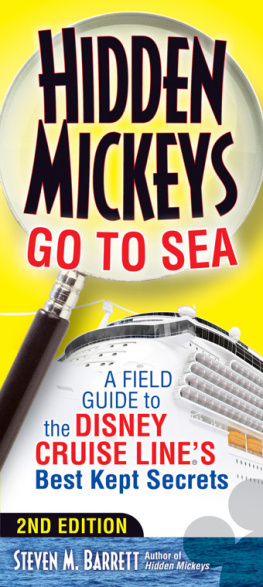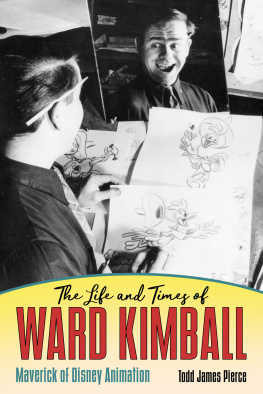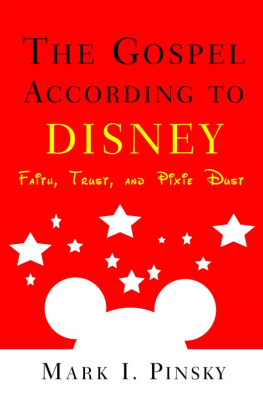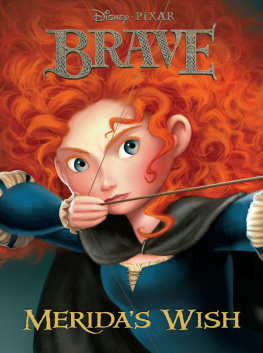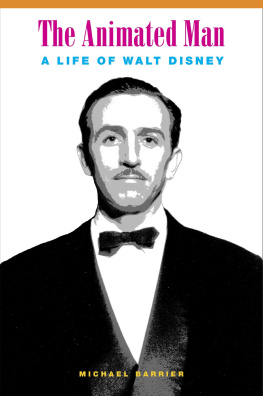The Disney Classics Quiz Book
C.J. Booth
THEME PARK PRESS
www.ThemeParkPress.com
(c) 2018 C.J. Booth
All rights reserved. Except as permitted under the United States Copyright Act of 1976, no part of this publication may be reproduced or distributed in any form or by any means, or stored in a database or retrieval system, without prior written permission of the publisher.
Although every precaution has been taken to verify the accuracy of the information contained herein, no responsibility is assumed for any errors or omissions, and no liability is assumed for damages that may result from the use of this information.
Theme Park Press is not associated with the Walt Disney Company.
The views expressed in this book are those of the author alone, and do not necessarily reflect those of Theme Park Press.
Theme Park Press publishes its books in a variety of print and electronic formats. Some content that appears in one format may not appear in another.
Editor: Bob McLain
Layout: Artisanal Text
Theme Park Press | www.ThemeParkPress.com
Address queries to bob@themeparkpress.com
To my wife, Jade, and my daughter, Poppy, who have patiently watched many Disney films with me over and over, and have been very understanding of me throughout the researching and writing of this book.
Contents
Introduction
Welcome to this celebration of Disney classic animated movies. I grew up with these classics and have happy memories of watching them with my family and friends.
The book is split into parts, each named after an era (albeit unofficial) of Disney classic films. There are over 1000 questions in over 62 quizzes to challenge and delight you. Each quiz is based on a single Disney film, and each has 15 questions. The question vary in style and difficulty, to make them fun for the whole family. There are questions on lyrics, quotes, details, and story plot, and other elements from the films I've also given you some fun trivia and enlightening information about what you may have missed in the films, including hidden Mickeys, A113 references, and Pixar balls, as well as other tidbits.
Hidden Mickeys
A hidden Mickey is a nod to the Mouse that started it all, portrayed by either items or markings in a scene making the iconic three-circle symbol of Mickey Mouse, or sometimes an actual image of the Mouse himself. I've listed the approximate times that they appear in the films. Note that the times are approximate and are taken from the standard-edition DVD or Blu-ray copies of the film, and may not line up if you are watching an extended version or a different format. This applies to the timing hints given for the A113 references and Pixar balls as well. Finally, hidden Mickeys can be subjective as to whether they are intentional, so I've listed all instances and will let you decide.
A113 References
At the art school that Walt Disney himself created, the California Institution of Arts, or CalArts as it's commonly known, A113 was the classroom number where many of the great graphical design and computer-animation artists learnt their profession. The artists celebrate this with "A113" references hidden throughout their films. You will see some of these references as we make our way through the classics, but these references are even more common in Pixar movies.
Pixar Balls
A Pixar ball is a yellow ball with a blue stripe and a red star, originally seen in the Pixar short Luxo Jr. in 1986, which was reshown with Toy Story 2 in cinemas in 1999. Similar to the hidden Mickeys and A113 references, these balls have started to make an appearance in Disney movies. As with the A113 references, they are primarily in Pixar movies, but there are some to be found in the classics, too.
The Golden Era: 1937-1942
Starting with Snow White and the Seven Dwarfs in 1937, the Golden Era consisted of just five films and covered as many years. The noticeable thing about these films is that they are all totally different and show the diversity and creativity being tested and experimented with by the Disney company. Although only two of these features were a commercial success upon release (Snow White and the Seven Dwarfs and Dumbo), this era is seen as "golden" for the groundwork it laid in the telling of animated stories.
In just five films Disney gave birth to the feature-length princess movie, the presentation of literature restyled for children, stories through the eyes of animals, comedy, and even theatrical masterpieces. The trusty sidekick was born in Jiminy Cricket and Timothy Mouse, the wicked stepmother began with the evil queen of Snow White, and would The Fox and the Hound have been the same without Bambi?
One thing that is more prominent in the Golden Era is the use of dark scenes, and this is partly due to the time in which they were created, and what was seen as acceptable, similarly to characters seen smoking in these early films. Although some of the films have darker moments, the mood shift capable in animation showed the power of the animated film, and would be a reference for some of the great films of the future.
Snow White and the Seven Dwarfs
This is the film that started it all. Originally dubbed by some as "Walt's Folly," all other classics have Snow White and the Seven Dwarfs to thank, because they might not have existed without its success. Snow White was not only the first Disney classic; it was the first feature-length animation film, and a pioneer in other fields.
Released at the Cathay Theatre in California on December 21, 1937, Snow White took in $8,500,000 on the initial release (briefly a record for a sound film). This was a relief for the Bank of America, as the original budget of $250,000 soared to $1,400,000 during production, and it took Walt showing the film half completed to the bank, and acting out the rest of the story to persuade the bank to lend him more funds.
The success brought on by Snow White and the Seven Dwarfs allowed the Disney company to build a new studio in Burbank, and earned Snow White her own star on the Hollywood Walk of Fame.
Did You See...
- The hidden Mickeys in the soap bubbles during the washing scene (45:06 and 49:20).
Do You Know...
- The overture at the opening is a medley of key songs from the film. Which song is first?
- Complete the line from the song "I'm Wishing": "Make a wish into the well [...]."
- Where does Snow White first see the prince?
- What does Snow White send to the prince via a dove?
- What do the bluebirds do when things go wrong?
- What animal faces are carved into the end of the stairs in the dwarfs' cottage?
- Which dwarf struggles to get his words in the right order?
- What does Snow White offer to bake for the dwarfs that persuades them that she should stay?
- When asked by Snow White, when do the dwarfs say is the last time that they washed?
- What did the huntsman take back to the queen as proof he had killed Snow White?
- When the queen mixes the peddler's disguise potion, each ingredient has a purpose. What is the scream of fright for?
- What is the name of the spell the queen / witch puts on the apple for Snow White?
- When Snow White and the dwarfs have a party, Dopey stands on which dwarf's shoulders to dance with Snow White?
- When the witch arrives at the cottage, Snow White is making a pie for which dwarf?
- How many songs (excluding any reprises) are there in Snow White?
Pinocchio
This classic is based on a story written by Carlo Lorenzini (who wrote under the name Collodi) originally for a magazine in 1881, and then updated into a novel in 1883.


